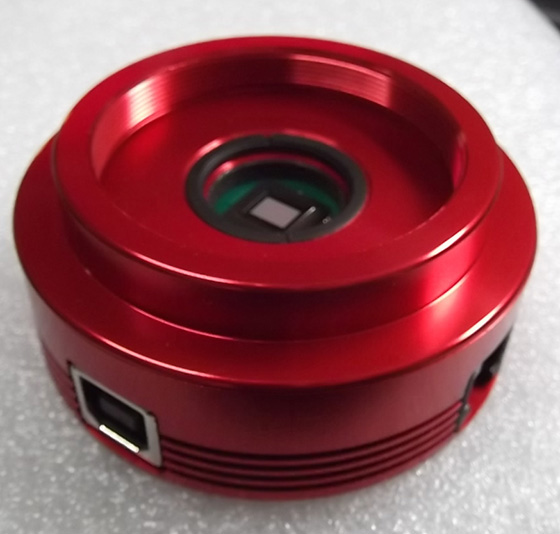
Starlight Express SVXF-M7C one-shot color CCD camera for astro-imaging

Most of my astro-imaging experience has been focused (!) on deep sky objecdts (DSOs) - galaxies, nebula, and star clusters. I had played around with solar system imaging, taking 'snapshots' with my STL11000 camera, and using either the FSQ106EDX for widefield (e.g., lunar or solar eclipse) imaging or the 12" LX200R for higher-magnification (e.g., sunspots, craters, planets) imaging. I had also tried using the ToUCam, a Philips webcam that is often used for beginning planetary imaging. Due to the high magnification required to see any details on a planet, and the usually poor atmospheric 'seeing' conditions, the contemporary approach to planetary imaging is using a high frame-rate video camera (i.e., CCD or CMOS chip that can be addressed and read-out very quickly). For lunar photography, video can be taken for tens of minutes, and then stacked, as the moon does not rotate (always faces the earth). However, for planetary applications, total imaging time must be kept within a few minutes (depending on the planet's rotational speed). As with DSO imaging, the best (highest resolution) results can be obtained using a monochrome camera and color filters. Thus, the three (R, G, B) exposures must all fit within, say, 3-6 minutes. In order to maximize the number of frames available for stacking (the more frames, the lower the noise), a high frame rate is desirable. This depends on the size of the frame, sensitivity of the camera, and brightness of the object. The ASI120MM, offered by ZWO Optical, is based on an industrial vision CMOS array, that has hgh sensitivity, widely adjustable frame size, and fast imaging capability. |
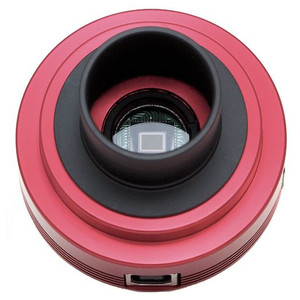 |
The ASI120MM uses the Aptina MT9M034, a 1.2 megapixel (1280x960 max) industrial vision chip in the so-called 1/3" video format. This is significantly larger than the 1/4" chips usually used in less expensive cameras (e.g., webcams). More information on the Aptina chip on which the ASI120MM is based can be found HERE. |
Specifications for the ASI120MM/MC cameras. Note the wide range of exposure times available (this camera has been used for deep space imaging, and produced some incredible results - look at bottom images on this PAGE). Also, there is a 12 bit ADC, allowing higher dynamic range than most webcams. Perhaps most important for planetary imaging, this camera has very small pixels, leading to a small (high resolution) plate scale. With my 12" LX200R and a 2X Powermate (7,200 mm focal length), the pixels are about 0.107 arcseconds. While this is substantially (20X) below typical seeing conditions, the stacking of thousands of frames, and sharpening using wavelets or deconvolution can bring out incredible detail. My first example of combined R, G, and B images from the ASI120MM can be seen in the Mars image on this PAGE. Here, Mars is a total of 15 arcseconds in diameter (and 4,200 miles around its equator). The planet is therefore comprised of about 140x140 pixels, with each pixel representing about 30 miles on the Martian surface. I estimate that this image has a resolution of about 0.3 arcseconds, or about 90-100 miles on Mars. This is incredible, even if my seeing were a very good 1.5 arcseconds.
| 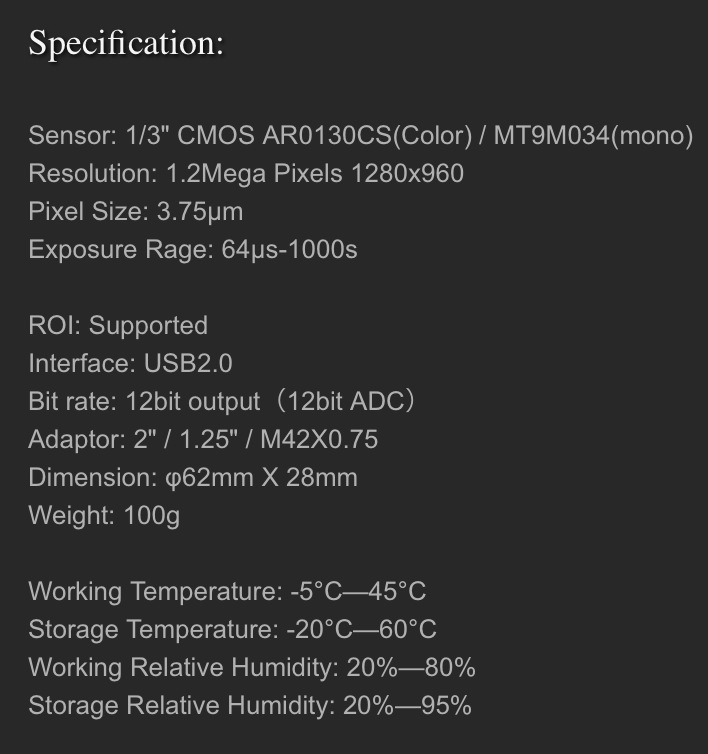 |
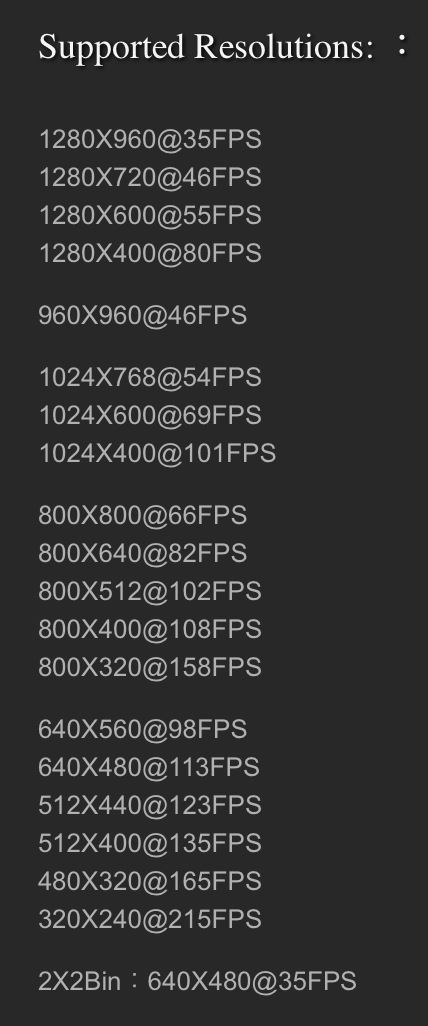 | Here is the list of resolutions supported by the ASI120MM (with suitable software, such as FireCapture). Note the very high frame rates possible with smaller regions of interest (ROIs). For example, the Mars image referenced in the previous paragraph was taken at a 320-240 pixel resolution; unfortunately, due to the exposure required, the frame rate was around 66 fps - much slower than the theoretical 215 fps shown in the table.
|
The camera comes with a fisheye lens, nosepiece, cover, guider cable, USB cable, and driver CD. As of early 2014, this package was sold by ZWO Optical for $330 or $300 for the monochrome or color camera, respetively. | 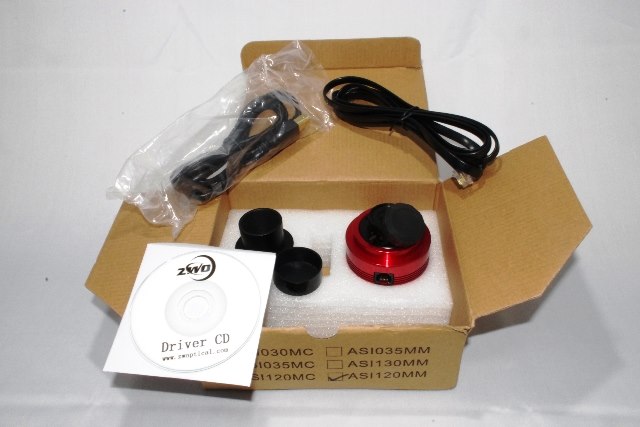 |
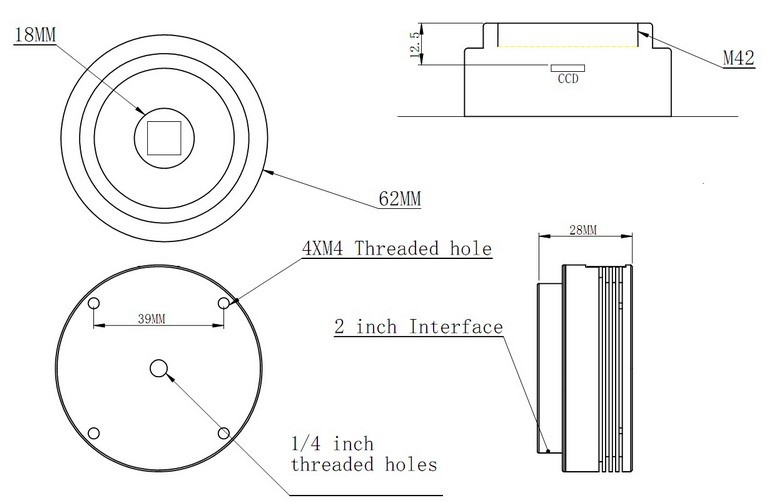 |
The ASI120MM has an M42 thread on the scope side - which mates with the filter wheel or helical focuser (or directly to the Powermate). The back surface has a 1/4-20 tripod thread. |
Here, you can see the camera with its 1.25" nosepiece mounted, alongside the fisheye lens provided with the camera (which could be used as an all-sky camera), and IR cut filter. |
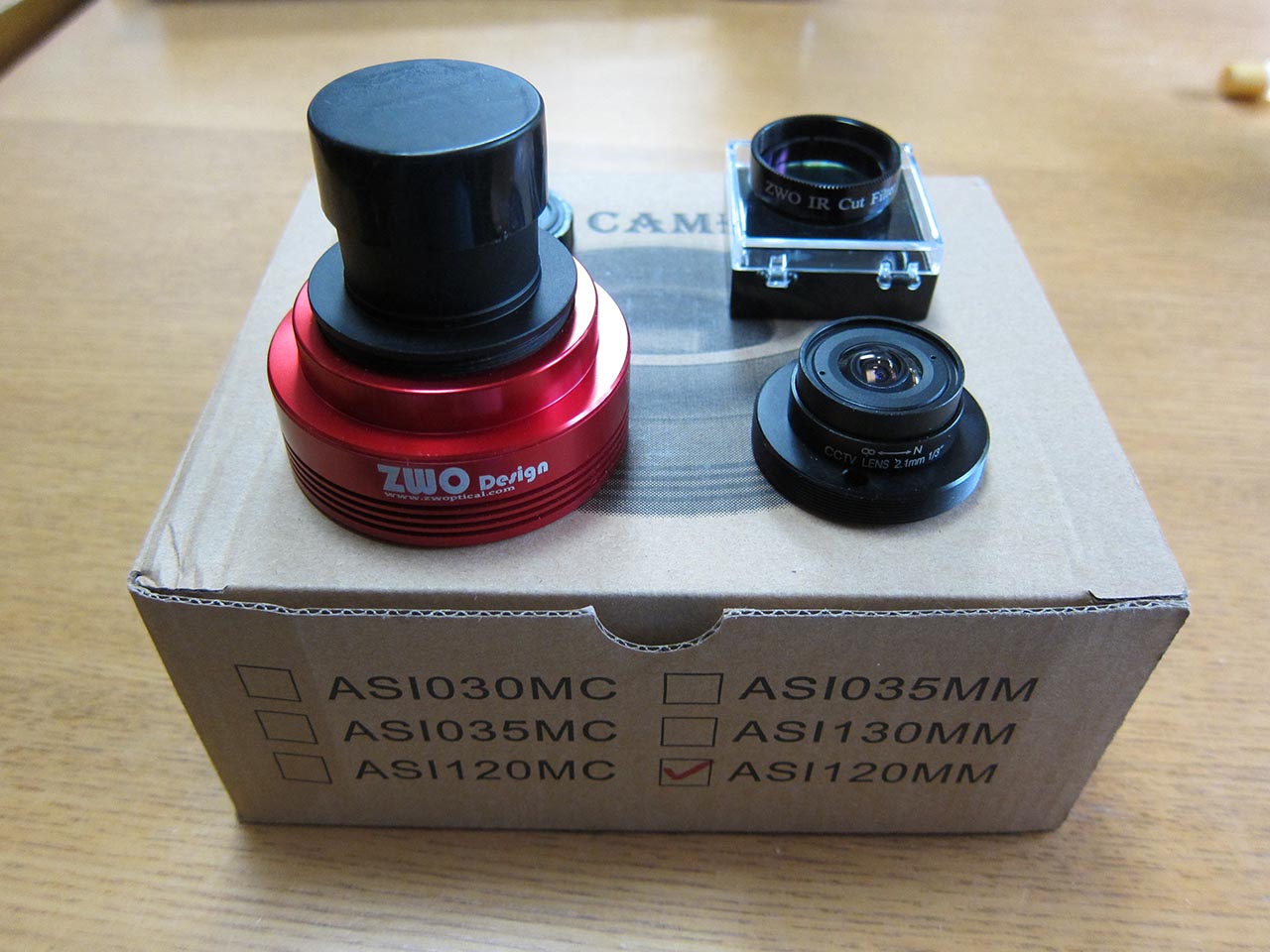 |
Overall, I believe the ASI120MM offers a revolution as a low-cost video camera that is an ideal match for planetary imaging, offering a larger format, with very small pixels, high sensitivity, and very fast frame rate. There are many other fine video cameras available for planetary imaging, including the Point Grey products (that offer a bewildering number of available chips, and prices from $300-3000). But the 'bang-for-the-buck' of the ASI120MM is incredible, and it is a giant leap from the ToUCam (or other webcam-based cameras). I am looking forward to mastering the various software required for planetary imaging - including FireCapture, Registax, Astra Image, and WinJUPOS, among others. Based on my initial images using this camera, I have no doubt that it has the capability to produce world-class (amateur) planetary images.
|
|
Meade Instruments DSI II color CCD camera for budget beginner astrophotography